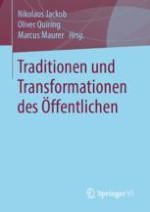2020 | OriginalPaper | Chapter
Fake News als Gefahr für die öffentliche Meinung?
Effekte des wiederholten Aufgreifens und erklärender Dementis auf die Glaubwürdigkeit von Falschinformationen
Authors : Thomas Koch, Nora Denner
Published in: Traditionen und Transformationen des Öffentlichen
Publisher: Springer Fachmedien Wiesbaden
Activate our intelligent search to find suitable subject content or patents.
Select sections of text to find matching patents with Artificial Intelligence. powered by
Select sections of text to find additional relevant content using AI-assisted search. powered by
